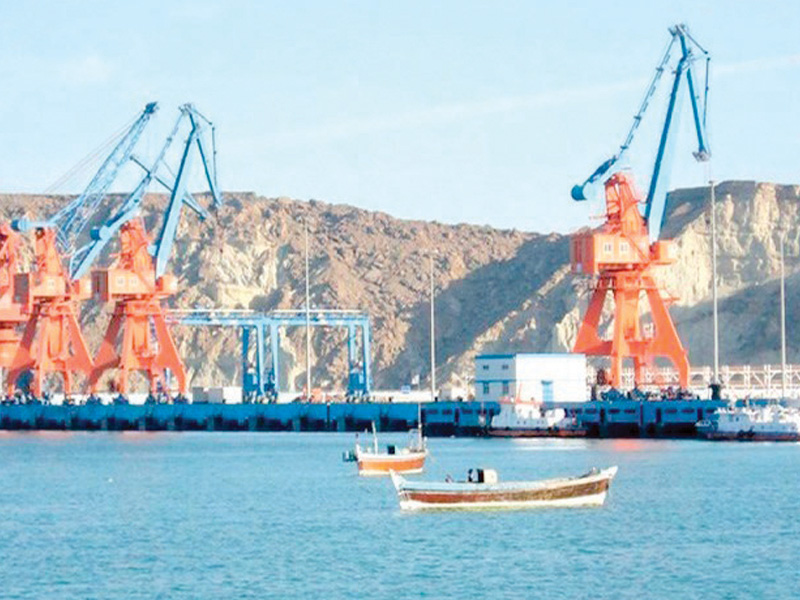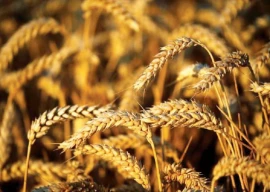
I feel, however, that the chances of that happening are not as great as what is currently being drummed up, simply because the project requires determination and the resolve to carry it through to the end; a trait we have demonstrated to be lacking in on many occasions. This is the very basic requirement for the successful completion of any huge project. There are other equally important realities, too, that cannot be overlooked.
We have been trying to do this Gwadar thing for the last many years and have failed. We haven’t got any magic wand now either which tells us that we can do it. Our governments in the past have rarely shown resilience against odds that do not favour them, and in this case there are factors that could halt the government in its tracks. At Pakistan’s request, China provided $198 million for the first phase of the port project, which was completed in 2006; it then remained lukewarm about further development. The project consists of three phases, so Pakistan is still waiting for investment to complete the remaining two.
The robust nature of China-Pakistan defence ties and a number of interrelated developments therein, has catapulted the port to international attention. China is developing its own western region and has been building a network of roads in Pakistan, and intends to lay pipelines and a railway track. Pakistan offered China a ‘trade and energy corridor’ via Gwadar, linked through inland roads. The plan would see oil being imported from the Middle East, stored in refineries at Gwadar and sent to China via road, pipeline or railway. What we should be considering though is that while China has built some roads in Pakistan, it still needs to lay thousands of kilometres of gas and oil pipelines and railway tracks in order to put Gwadar into use. That will cost money, and China may be reluctant to invest if the region continues to be volatile.
Furthermore, Pakistan faces a low-scale insurgency in Balochistan, where Gwadar is located and through which the proposed pipelines will pass. Several tribal chiefs are opposed to large-scale foreign investment, fearing it will bring an influx of outsiders. They demand greater autonomy and royalties for the extraction of natural resources. Although China has developed local infrastructure, it is considered as an ‘exploiter’ by some segments of the local population. Some Chinese workers have in the past been victims of targeted attacks. The port has failed to draw any major business since its completion in 2006. The fact that the port remained unused was one reason the Port of Singapore Authority (PSA) withdrew from the area. Unlike Islamabad’s tall claims about the port’s geo-economic significance, Beijing has taken a more cautious and realistic approach. China remains sceptical of the port’s profitability. Both in 2001, when it agreed to finance the first phase of the port, and in 2013, when it took over its administrative control, Pakistan had to drag Beijing into the project. Some analysts believe that the Chinese interest is strategic and the port could become China’s naval base in the Indian Ocean, enabling Beijing to monitor Indian and US naval activities. The port has also been called the western-most link in China’s ‘string of pearls’ strategy. However, we must acknowledge that Gwadar is not the only option for the Chinese in the Indian Ocean. It is probably not even the most viable option. Beijing has developed Hambantota port in Sri Lanka and has also built a container port facility in Chittagong, Bangladesh. In Myanmar, Beijing has built roads, dams and pipelines, and is looking to the ports of Kyaukpyu and Sittwe, regardless of the fact that the latter is being built by India. Beijing intends to lay a pipeline from Kyaukpyu to Yunnan province. Chinese oil ships from the Middle East and Africa will cross the Bay of Bengal and unload at these ports, allowing oil to be piped to Yunnan. China appears more optimistic about the future of an Arakana-Yunnan pipeline than the Gwadar-Xinjiang pipeline because it considers Myanmar capable of protecting its assets.
Due to its strategic location and because of the strong military ties between China and Pakistan, Gwadar has received excessive attention from the very beginning. Despite over a decade having passed since China started construction of the first phase, no military-related activity has ever been observed there. If China intended to use a Pakistani port for naval purposes, Karachi, with its established military infrastructure, is an alternative although it has the strategic disadvantage of proximity to India. Notwithstanding that, Gwadar has far better opportunities for China as a military base if the two sides decide to look at it from the same perspective.
It is quite likely that China will develop the port quickly by making a bigger investment than the PSA, but its current interests appear commercial, aimed at securing an alternative route for its energy supplies. Having said that, Gwadar is just one of the several options for Beijing, and due to the volatile security situation in the region, it may not be China’s best bet. Gwadar is, therefore, far from becoming a Chinese economic hub, let alone a security asset. What Pakistan needs to do is make Balochistan safe for this project. Do we have the spine and intellect to do this?
Published in The Express Tribune, September 19th, 2015.
Like Opinion & Editorial on Facebook, follow @ETOpEd on Twitter to receive all updates on all our daily pieces.
























1714024018-0/ModiLara-(1)1714024018-0-270x192.webp)




















COMMENTS (17)
Comments are moderated and generally will be posted if they are on-topic and not abusive.
For more information, please see our Comments FAQ